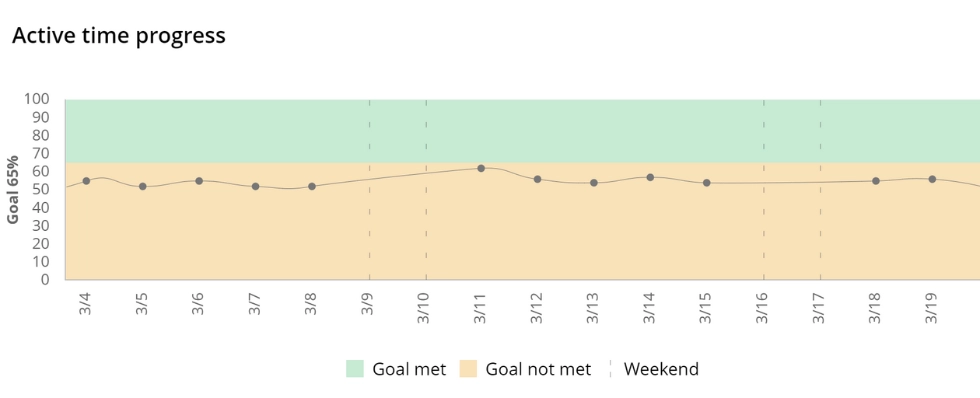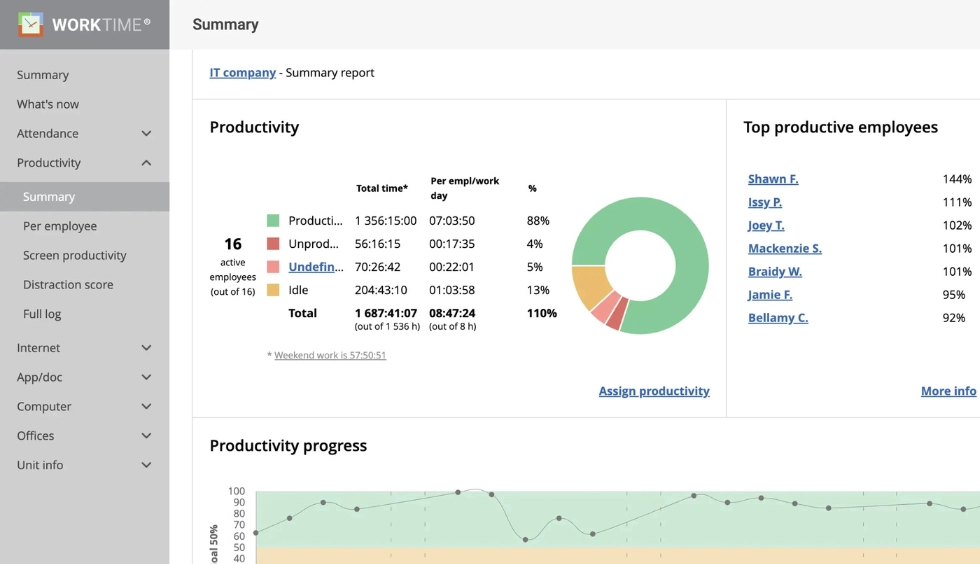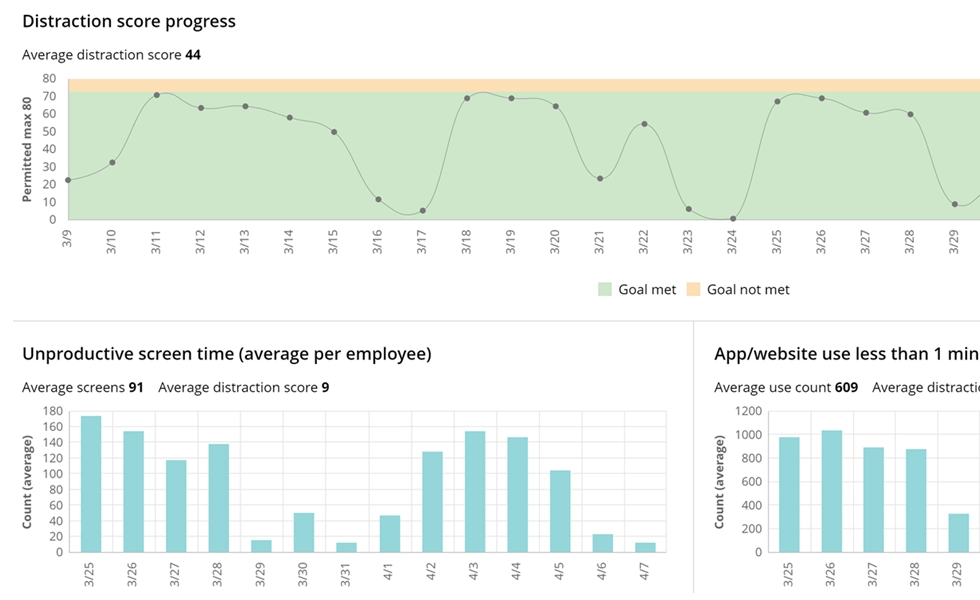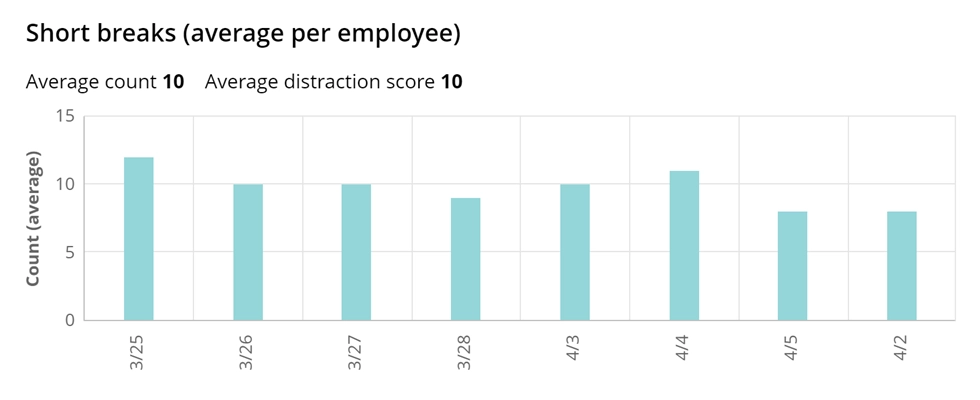Issue/challenge
Simple calculations showed that each smoker wastes, on average, 3 hours of working time weekly (additionally to regular breaks). Along with lower active time, too often smoke breaks at work implied money paid for idle time. It was only a rough estimate, while Jay needed to see the big picture to address this issue. So, the manager searched for a tool that could help him achieve several goals:- Get real numbers of time spent on smoke breaks;
- Investigate whether the employees taking too many smoke breaks are productive or tend to underperform;
- Evaluate employee active time during the workday;
- Ensure that smokers are as productive and engaged as other workers.
Solution
Jay was opposed to “traditional” tracking features like screenshots or keystrokes monitoring. What’s more, screen content recording made no sense, as the manager required valuable and accurate data. That’s why his firm implemented WorkTime to solve the smoke break issue, as it provided non-invasive, secure, and comprehensive reports in numbers and statistics.Usage
After a month of use, a manager had valuable statistics that helped him make reasonable decisions. WorkTime reports confirmed that employees who had frequent smoke breaks were less engaged. Furthermore, chain smokers’ active time progress was significantly lower compared to the rest of the team. Employee monitoring assisted in a variety of management tasks:
WorkTime monitors employees' internet activities and measures productivity..
Book demo

Boost employee productivity with WorkTime! Here's a glimpse of the Productivity Summary Report, where you can see your top productive and unproductive employees, along with productivity progress over the last 30 days. Start your free trial to explore over 60 additional reports!
Start free trial


The WorkTime Summary Report provides a quick overview of the company’s overall performance: productivity levels, active and idle time, top productive and unproductive employees and apps/websites, who is in the office, and more.
Book demoResult
WorkTime implementation considerably improved the overall employees’ performance:- Higher productivity: from 60% to 85%;
- Lower distraction score: from 65 to 20;
- Increased active time: from 55% to 89%;
- Higher engagement.
Bonus info
Smoke breaks cost millions of dollars
The studies showed that smoke breaks can consume three weeks of paid time annually. For business owners, this time is equivalent to millions of dollars paid for unproductive time.According to the investigation on smoking-related costs in Taiwan, the productivity losses related to smoke breaks reached $733 million.
Hidden cost of smoke breaks at work
1. At work but not productive
Frequent smoke breaks lead to a loss of focus during the work day.If the employees are at work, it does not mean they are productive. Smokers are more distracted and less engaged in the work process. As a result, they have lower productivity than their non-smoking colleagues.
2. Absenteeism
Smoking in the workplace is also linked to absenteeism. According to statistics, smokers take sick leave more often.Smokers have a higher rate of absenteeism, resulting in extra costs for employers paid for unscheduled absences.
3. High distraction score
Regular employee smoke breaks increase the distraction score, which harms performance. It’s harder for distracted employees to regain focus and stay productive. Moreover, distraction results in delayed delivery of work results.How to manage smoke breaks at work?
Smoking in the workplace requires effective management to prevent possible negative effects on employee performance. Companies worldwide implement different strategies. For instance, some owners set strict break policies, while others try various approaches to find a compromise. What are possible ways to manage smoke breaks at work?- Implement a smoke-break policy. It’s better to make them inclusive to promote equality. The best way to solve this issue is to set an allowed duration for all work breaks, whether a cigarette break, a lunch break, or others.
- Engage employees to reduce the number of smoke breaks during the day. For example, one company in Japan found the solution to a smoking dilemma. The employer provided extra paid days off for non-smokers because they do not take cigarette breaks during the day.
- Monitor active time. Active time and productivity monitoring can help reveal the problem with employee performance on time and address this issue.
Try WorkTime right now to regulate smoke break issues effectively.










